Finding Math in a Tub of Water
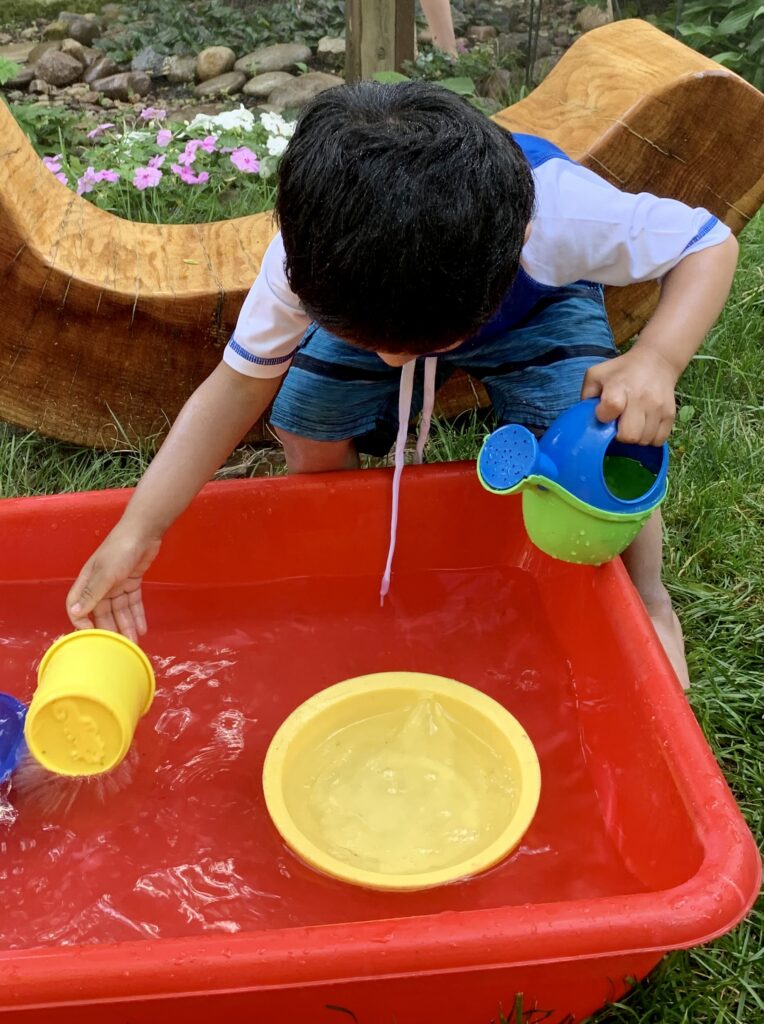
It’s another 90-degree morning, and we’re going deep into water play to keep our budding mathematicians as cool and happy as possible on this humid, sultry day.
I glance over just in time to catch three-year-old Tahin playing with one of the small watering cans. It’s obvious that no one has mentored him on the fine art of submerging his watering can to fill it up with water. I observe him closely as he problem-solves.
First, he reaches for a small yellow cup, fills it up with water and tries to pour it into the small opening of his watering can. Most of the water runs down the side of the watering can, but he keeps trying, oblivious to his surroundings as he repeats the process over and over with the same disappointing results.
But this little guy is resilient. He doesn’t get frustrated or angry, he doesn’t give up and he doesn’t ask for help. He persists!
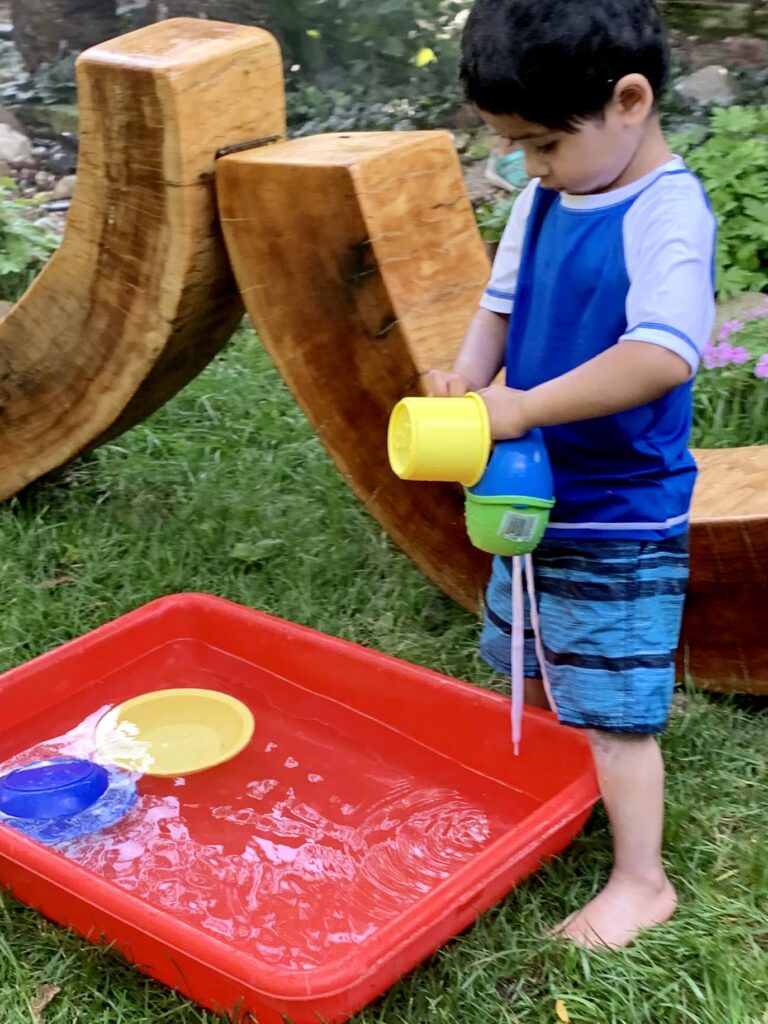
Tahin, like most children, can spend countless hours playing with water, pouring it back and forth, watching it spill over the edge of the cup, splashing gently and pouring some more.
My love of water play has been well documented on this blog, and it’s one of our favorite summer learning adventures.
Math might not be the first thing you think of when you think about water play, but water presents many opportunities to explore one of the main areas of mathematics, which is measurement!
If you’ve been using your water table as a “sensory table” filled with something other than water during the winter months, now is a great time to move it outdoors for some long periods of math play.
Children are naturally drawn to water and this naturally occurring (read “free”) element fosters curiosity, imagination, investigation and experimentation. What more could one ask of a learning tool?
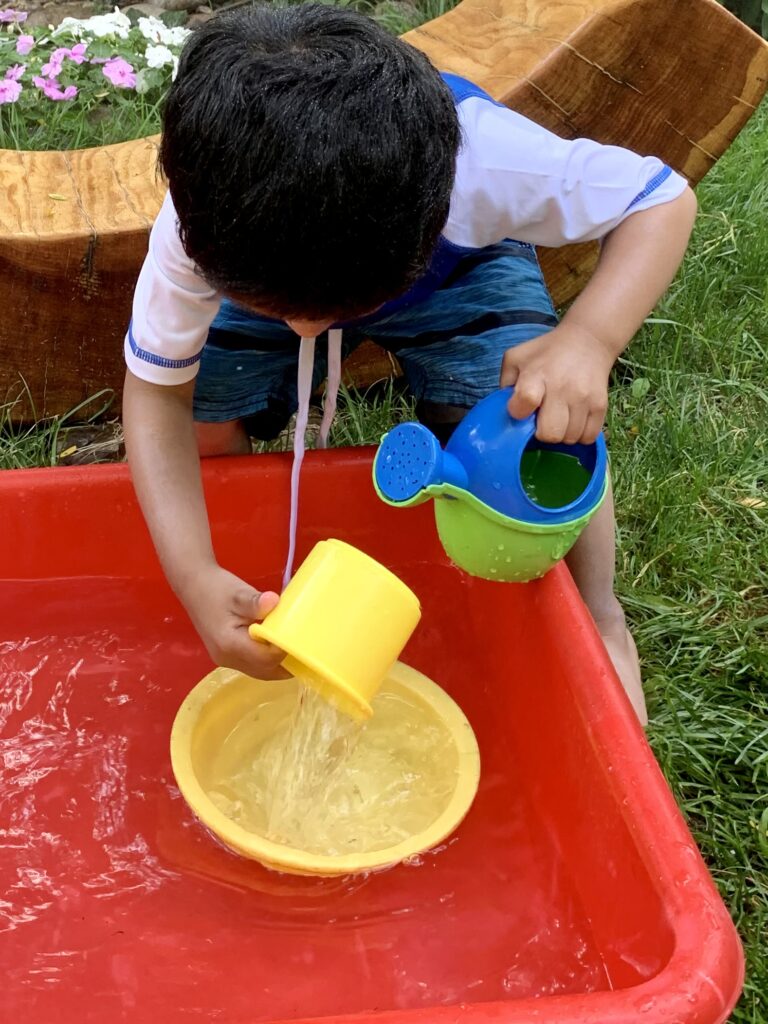
I watch as Tahin abandons his first idea and tries a different approach, using the yellow cup to fill a larger yellow bowl, which he then uses to pour the water into his watering can.
When Tahin empties the smaller yellow cup into the larger yellow bowl, he also begins to learn which container holds more and which container holds less.
He also has the opportunity to use the cup as a unit of measurement and see how many cups it takes to fill the larger bowl.
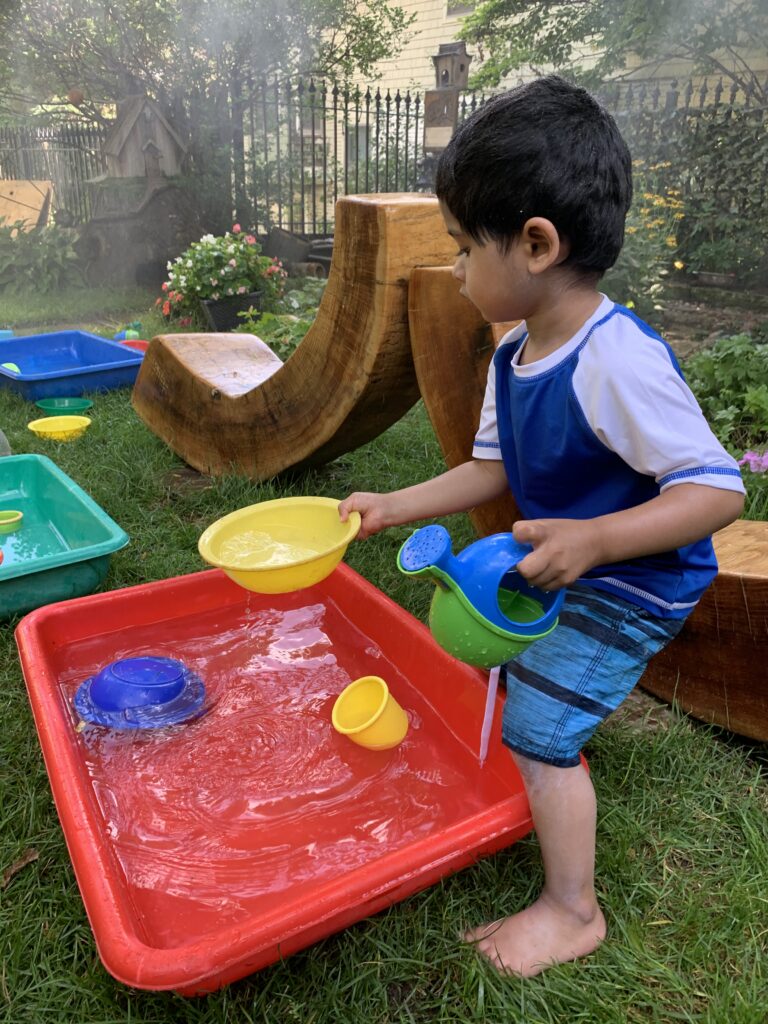
Tahin carefully lifts the larger bowl, moves it close to his plastic watering can and tips it to pour the water into the can. The bowl’s wider rim and the greater volume of water are a winning combination.
Tahin’s second method proves to be successful, and the watering can is soon filled to the brim. This is persistence and problem-solving at its finest!
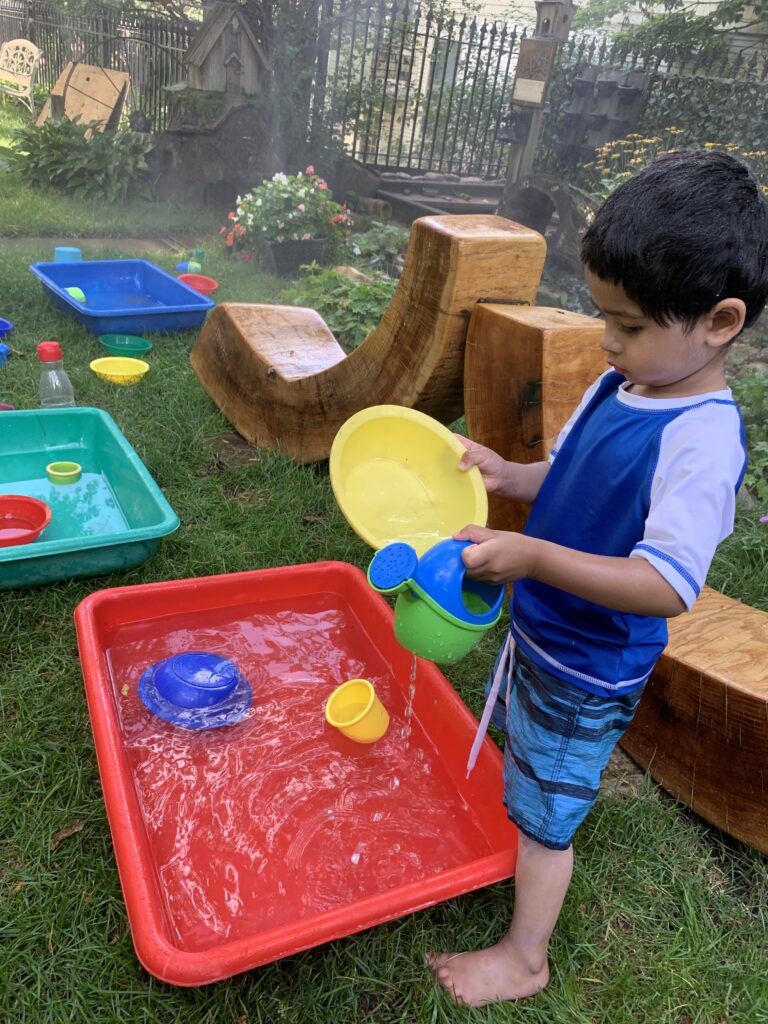
Water play is always developmentally appropriate, regardless of a child’s physical condition, age, language, gender or culture.
When children are engaged in water play, they tend to lose themselves in the activity and can spend long periods of time experimenting and playing. This encourages children to focus.
Any activity that requires sustained focus will increase a child’s attention span, sharpen problem-solving skills and enable the child to solve more complex problems later in life.
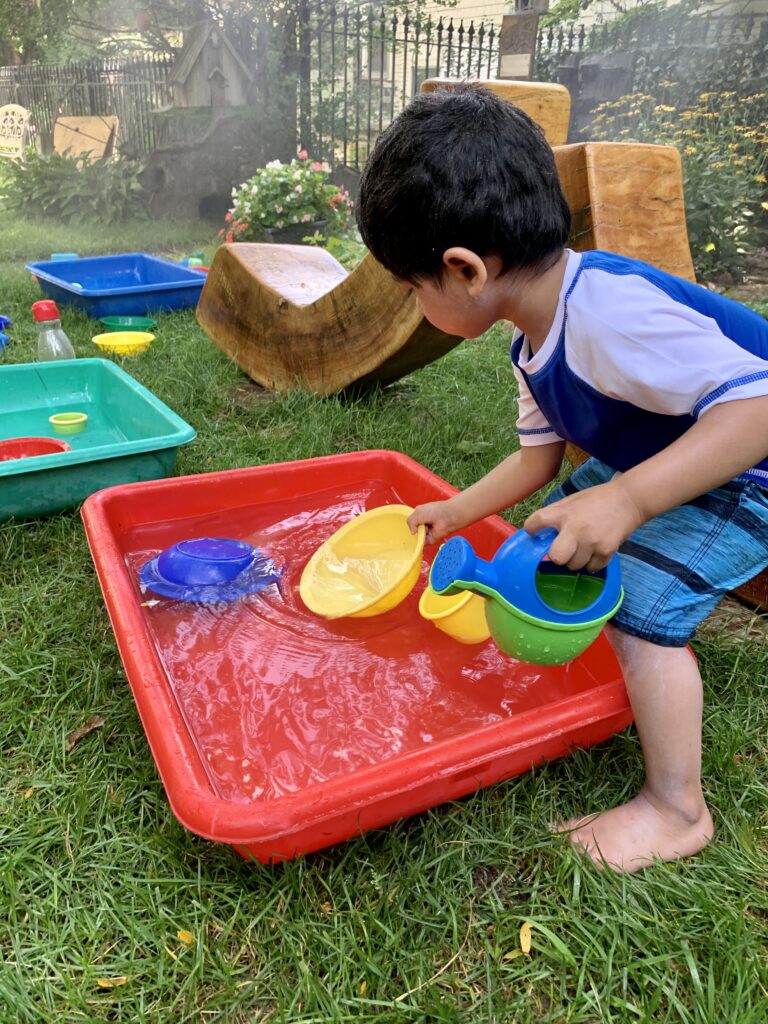
Open-ended water play also presents opportunities for children to use both sides of the brain as they problem-solve.
Children can explore and problem-solve in any manner that they choose, which forces them to be creative as they try out new ideas.
This is an example of executive functioning at work! Executive function skills help us make a plan and troubleshoot when the plan is underway.
Eve (pictured below) is developing and practicing her executive function skills through play!

We like to stimulate the imaginations of our early learners by changing our water-play tools frequently.
Here are just a few of the tools that we add to the mix on different days:
- Throw some ice cubes into the water and give the children slotted spoons to fish them out.
- Scatter sponges around the water play area. This often leads to activities such as washing the bikes or the plastic animals that we keep in the sand play area.
- Styrofoam meat trays and toy boats can be used to transport those plastic animals in water as well.
- Funnels, soup ladies and turkey basters are also big hits.
- Condiment squeeze bottles are great for building grip strength and strengthening the muscles of little hands.
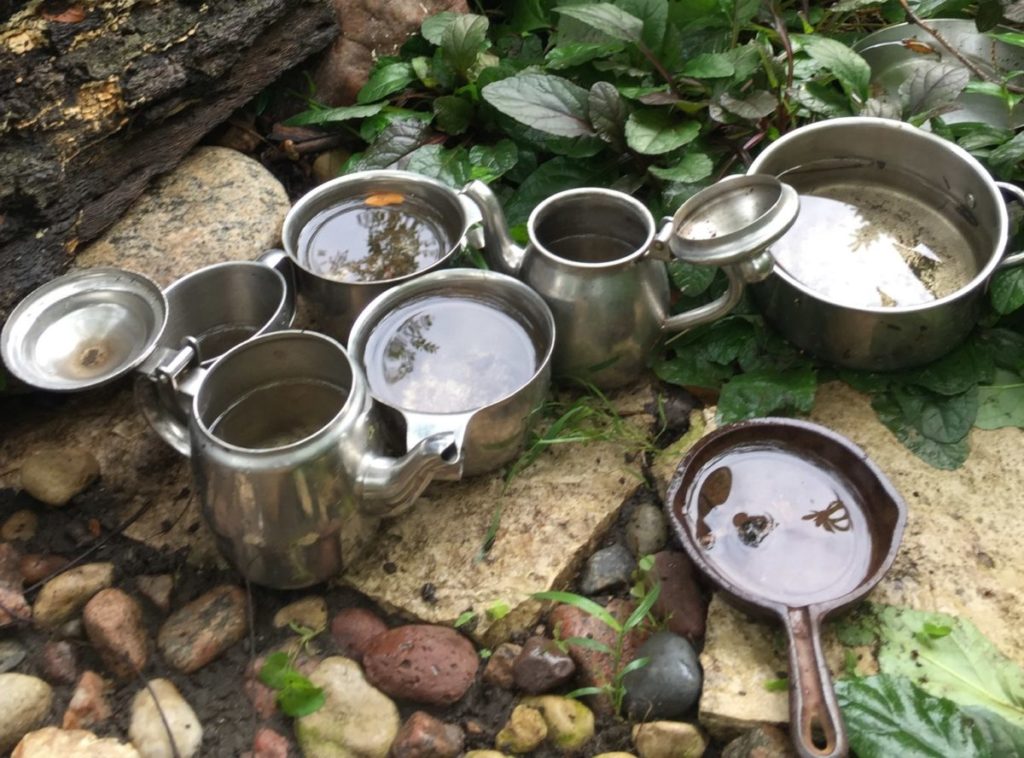
Whenever children play with water, they are exploring mathematical concepts such as volume, capacity, size and shape.
There are many good reasons to bring water play into your outdoor play space. It’s a fun, refreshing pastime that will chase away the children’s lethargy on muggy summer afternoons—and it’s chock full of learning and skill-building opportunities.
What better way to knock out those early learning standards when the temperature and humidity soar?
I love this!!!!
This is a great exercise to show how to measure using space and objects! Great work!
This is great. No matter what the children will be intrigued because of the water.
this is great ,children love playing in water.
what a great way of explaining water play in relation to math concepts!
Great way to incorporate measurements
Water play was always one of my kids favorite activities. What a fun way to learn through play.
I love to use water in my sensory table. I enjoy watching use different tools to explore measurements.
I enjoyed seeing all the different measurement tools, water play is so fun especially when you get the choice of what your playing in.